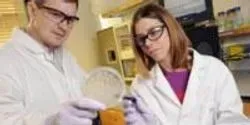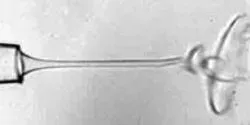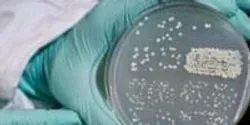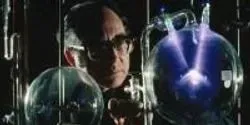All by Georgia Institute of Technology
Filter by
AllArticlesAudioEbooksEventsInfographicsNewsProductsSurveysDocumentsVideosVirtual EventsWebinars
Meetings, emails, and presentations are often filled with a seemingly endless stream of jargon — such as ‘pick the low-hanging fruit’ or ‘think outside the box’ — that is supposed to serve as shorthand to help convey a message. Does it work? Does its overuse become cliché? Why do people rely on jargon to communicate?

When oil from the Deepwater Horizon spill first began washing ashore on Pensacola Municipal Beach in June 2010, populations of sensitive microorganisms, including those that capture sunlight or fix nitrogen from the air, began to decline. At the same time, organisms able to digest light components of the oil began to multiply, starting the process of converting the pollutant to carbon dioxide and biomass.

Ribonucleotides, units of RNA, can become embedded in genomic DNA during processes such as DNA replication and repair, affecting the stability of the genome by contributing to DNA fragility and mutability. Scientists have known about the presence of ribonucleotides in DNA, but until now had not been able to determine exactly what they are and where they are located in the DNA sequences.

Crowd science is making possible research projects that might otherwise be out of reach, tapping thousands of volunteers to help with such tasks as classifying animal photos, studying astronomical images, counting sea stars and examining cancer cell images. Also known as “citizen science,” these efforts to involve ordinary people in research projects have attracted interest from policy makers, scientific agencies and others.

The southeastern United States is a natural laboratory for scientists studying how chemicals emitted by human activities and trees interact with each other and affect air quality and climate. A new study has found that certain emissions from cars and coal-fired power plants promote processes that transform naturally occurring emissions from trees into organic aerosols. Organic aerosols make up a substantial fraction of ambient particulate matter (PM) that can affect climate, air quality and human health.

When someone you know is wearing an unfamiliar hat, you might not recognize them. Georgia Institute of Technology researchers are using just such a disguise to sneak biomaterials containing peptide signaling molecules into living animals.

The Taj Mahal’s iconic marble dome and soaring minarets require regular cleaning to maintain their dazzling appearance, and scientists now know why. Researchers from the United States and India are pointing the finger at airborne carbon particles and dust for giving the gleaming white landmark a brownish cast.

Researchers from Columbia Engineering and the Georgia Institute of Technology have reported the first experimental observation of piezoelectricity and the piezotronic effect in an atomically thin material, molybdenum disulfide (MoS2), resulting in a unique electric generator and mechanosensation devices that are optically transparent, extremely light, and very bendable and stretchable.

A new class of synthetic platelet-like particles could augment natural blood clotting for the emergency treatment of traumatic injuries – and potentially offer doctors a new option for curbing surgical bleeding and addressing certain blood clotting disorders without the need for transfusions of natural platelets.

Industrial wet spinning processes produce fibers from polymers and other materials by using tiny needles to eject continuous jets of liquid precursors. The electrically charged liquids ejected from the needles normally exhibit a chaotic “whipping” structure as they enter a secondary liquid that surrounds the microscopic jets.

The ability to accurately repair DNA damaged by spontaneous errors, oxidation or mutagens is crucial to the survival of cells. This repair is normally accomplished by using an identical or homologous intact sequence of DNA, but scientists have now shown that RNA produced within cells of a common budding yeast can serve as a template for repairing the most devastating DNA damage – a break in both strands of a DNA helix.

An analysis of patented university inventions licensed to biotechnology firms has revealed early bottlenecks on the path to commercialization. To open these roadblocks, the researchers suggest that better communication of basic research results during the discovery stage could lead to faster commercialization down the road.

Light from tiny galaxies over 13 billion years ago played a larger role than previously thought in creating the conditions in the universe as we know it today, a new study has found. Ultraviolet (UV) light from stars in these faint dwarf galaxies helped strip interstellar hydrogen of electrons in a process called reionization.

Sir Isaac Newton probably wasn’t thinking about how animals urinate when he was developing his laws of gravity. But they are connected – by the urethra, to be specific.

Stanley Miller, the chemist whose landmark experiment published in 1953 showed how some of the molecules of life could have formed on a young Earth, left behind boxes of experimental samples that he never analyzed. The first-ever analysis of some of Miller’s old samples has revealed another way that important molecules could have formed on early Earth.









